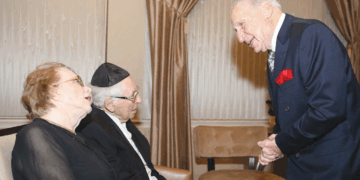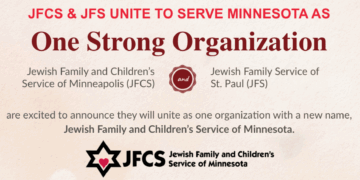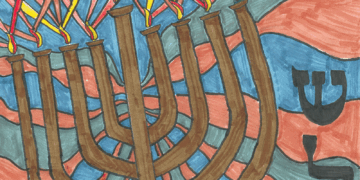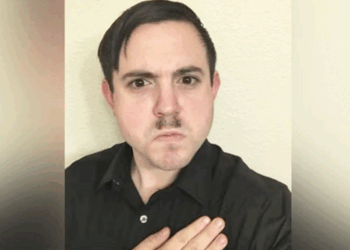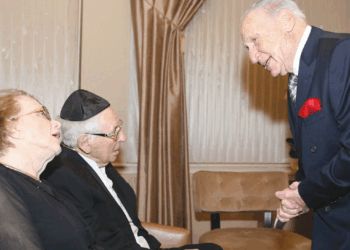An epochal event in American culture will be marked in about a week: the 50th anniversary of The Beatles’ appearance on The Ed Sullivan Show, Feb. 9, 1964. According to the show’s official Web site: “A record setting 73 million people tuned in that evening making it one of the seminal moments in television history. Nearly 50 years later, people still remember exactly where they were the night The Beatles stepped onto Ed Sullivan’s stage.”
In fact, I was with my family in the living room of my great aunts’ home in St. Paul. I was the authority of the moment, as I knew the names of the individual band members — and Auntie Annie and Auntie Sarah didn’t. It was an exciting television show, as teenage hysteria was clearly holding sway in the studio audience.
The Beatles, of course, went on to becoming the most famous rock ’n’ roll band in history; although they disbanded more than 40 years ago, they remain one of the most popular groups in the world. According to one online source, The Beatles have sold more than 2.3 billion albums. They have sold 585,000 albums and 2.8 million singles on iTunes.
Beyond the group’s staggering commercial success, The Beatles marked a cultural shift in the United States and Europe. Although their idol Elvis was a sensation who encouraged a generation to let their backbones slip a bit, The Beatles played a significant role in the 1960s zeitgeist, which gave birth to the counter-culture. This was the era of the “generation gap,” when long hair, pot and rock music represented a challenge to the dominant society and the power elite prosecuting the Vietnam War.
Indeed, in the late ’60s, young men wearing long and shaggy hair could expect catcalls from passing cars, if not physical assaults. The military draft presented an existential choice for many young men at that time. The choices were joining the army and getting shipped to Vietnam, flight to Canada, resistance and prison, or some type of subversion (draft dodging).
In stark terms, the “love generation” was arrayed against the “culture of death.” Over time, leftist ideology and hippiedom were assimilated into the dominant society — the word back then was “co-opted.” We see the aftermath of the alternative culture in the natural foods sections of supermarkets, environmentalism and feminist consciousness.
Sparks of the counter-culture are still alive in idealistic movements that envision a more humane and equitable society. This is a tough row to hoe in the midst of the ongoing Great Recession, and the pressure on families to keep hearth and home together. People don’t have a lot of free time to agitate for societal change.
But some do.
One of the voices of sanity in the world, musician, songwriter and activist Pete Seeger, passed away on Monday. He was 94. Seeger kept picking the banjo — no electric guitars for him — which he emblazoned with the motto: THIS MACHINE SURROUNDS HATE AND FORCES IT TO SURRENDER.
The Milken Archive of Jewish Music remembered Seeger this week as the composer of standards including “If I Had a Hammer,” “Where Have All the Flowers Gone?” and “Turn, Turn, Turn.”
And the Milken Archive recalls that Seeger was a member of The Weavers, whose song “Tzena, Tzena, Tzena” rose to No. 2 on the Billboard pop chart. The song “was a great example of the power of music not only to entertain but to bring people together,” said Milken Archive of Jewish Music founder Lowell Milken.
Issachar Miron, a Holocaust survivor from Poland, wrote the original melody of “Tzena, Tzena, Tzena” in 1941, while he was serving in the British Brigade in pre-state Palestine. The song was originally written in Hebrew in 1941 by Yehiel Chagiz, who had fled Poland as a teenager and was, at the time, serving in the British Brigade in then-Palestine. Miron composed the melody; Yehiel Chagiz wrote the lyrics; and, in 1946, Julius Grossman wrote a “third part” to the song, which is the version Seeger heard.
In a 2000 interview with the Milken Archive, Seeger said, “Until I started living in New York at age 19-20, I knew so little about Jewish culture, it’s shameful.” He befriended Jewish musicians, and “it was from one of these young men that I learned ‘Tzena, Tzena’ in 1948.”
Seeger said that he performed the song with The Weavers in a Greenwich Village nightclub, without knowing anything of the song’s history or what the lyrics meant. Famed bandleader Gordon Jenkins heard the group (which also included Ronnie Gilbert, Lee Hays and Fred Hellerman), and arranged for a recording of the song with English lyrics he composed. (Another single by The Weavers, “Goodnight, Irene” went to No. 1 on the pop charts.)
“Tzena, Tzena, Tzena” according to the Milken Archive, is a rousing call to “join the celebration” with “people from every nation” who’ll “dance the hora” until “dawn will find us laughing in the sunlight dancing in the city square.”
To the wider world, Seeger, who was a victim of the McCarthy era blacklist, was known for both his music and his activism in the cause of civil rights, environmentalism, and against war and nuclear weapons proliferation.
Issachar Miron told the Milken Archive in 2000: “The truth is, Pete Seeger made it [“Tzena, Tzena, Tzena”] a song of peace, made it a song of joy. May God bless Pete Seeger and may God bless the singers.”
— Mordecai Specktor / editor@ajwnews.com
(American Jewish World, 1.31.14)

